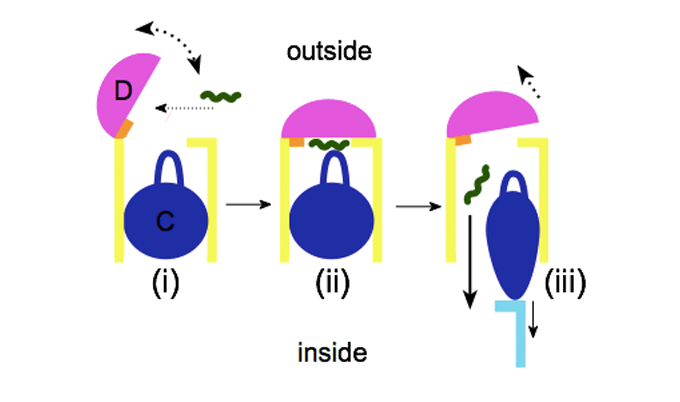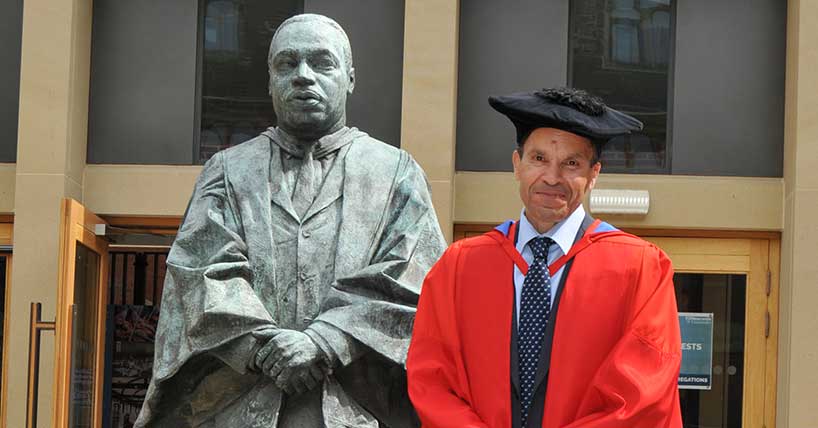"pedal bin machine" of gut bacteria
‘Pedal bin machine’ of gut bacteria revealed
Published on: 11 January 2017
Researchers shed new light on the functioning of human gut bacteria, revealing how nutrients are transported into the bacterial cell.
The researchers, led by Professor Bert van den Berg and Dr. David Bolam from the Institute for Cell and Molecular Biosciences at Newcastle University and with support from collaborators at Jacobs University Bremen, report on their findings today in Nature.

Nutrient acquisition
The human large bowel ("gut") is colonised by an extremely dense population of bacteria, collectively termed the microbiota or "gut flora".
Recent research indicates that the microbiota is important for human health and nutrition and has been linked with auto-immune diseases, cancer and obesity. The function and composition of the microbiota is dependent on the ability of individual micro-organisms to acquire nutrients such as starch and other dietary polysaccharides in the highly competitive environment of the human large bowel.
This process of nutrient acquisition is carried out by protein machines embedded in the bacterial cell envelope. In many microbiota members, this machine is a two-component complex consisting of a substrate binding protein (termed SusD) and a channel-forming transport protein (termed SusC).
The team at Newcastle University today report that they have purified and determined the first three-dimensional atomic structures of SusCD complexes by X-ray crystallography and have established how the nutrients are transported into the bacterial cell.
"pedal bin machine"
The SusCD complexes function like a pedal bin, with SusD forming the lid on the SusC bin. In the absence of substrate, the lid can open. After substrate capture, the lid closes and the substrate moves into the bin for transport into the cell.
The study provides fundamental insights into the functioning of the microbiota and understanding the human-gut flora symbiosis. Results such as these are a timely and necessary complement to most current microbiota research, which is largely focused on answering systems biology questions such as "who is there and when?".
By linking mechanistic and systems biology, the study could also provide insights to manipulate the composition of the microbiota via interference with critical nutrient uptake processes.
Reference: Structural basis for nutrient acquisition by dominant members of the human gut microbiota. Amy J. Glenwright, Karunakar R. Pothula, Satya P. Bhamidimarri, Dror S. Chorev, Arnaud Baslé, Susan J. Firbank, Hongjun Zheng, Carol V. Robinson, Mathias Winterhalter, Ulrich Kleinekathöfer, David N. Bolam, Bert van den Berg. Nature. doi: 10.1038/nature20828



